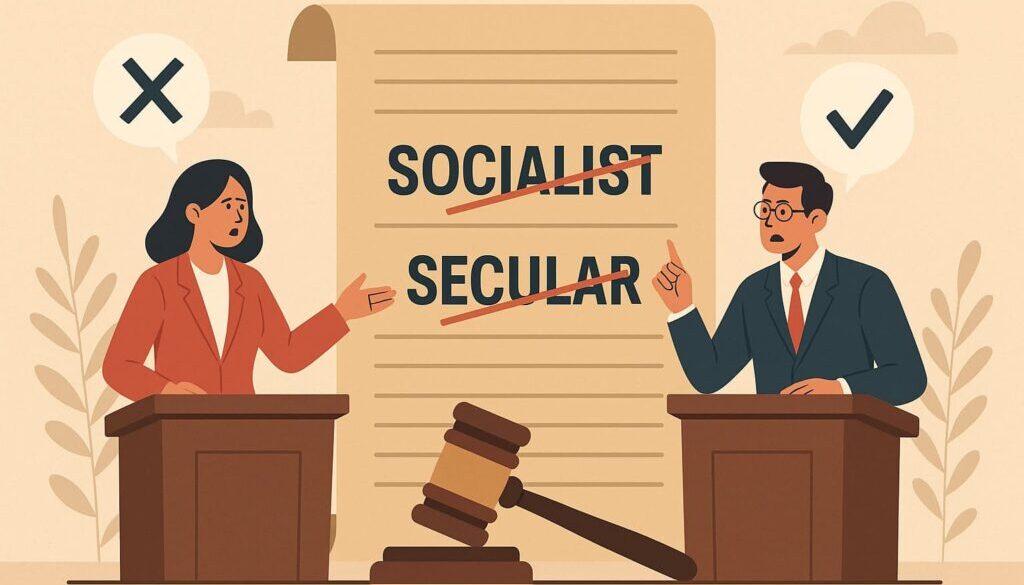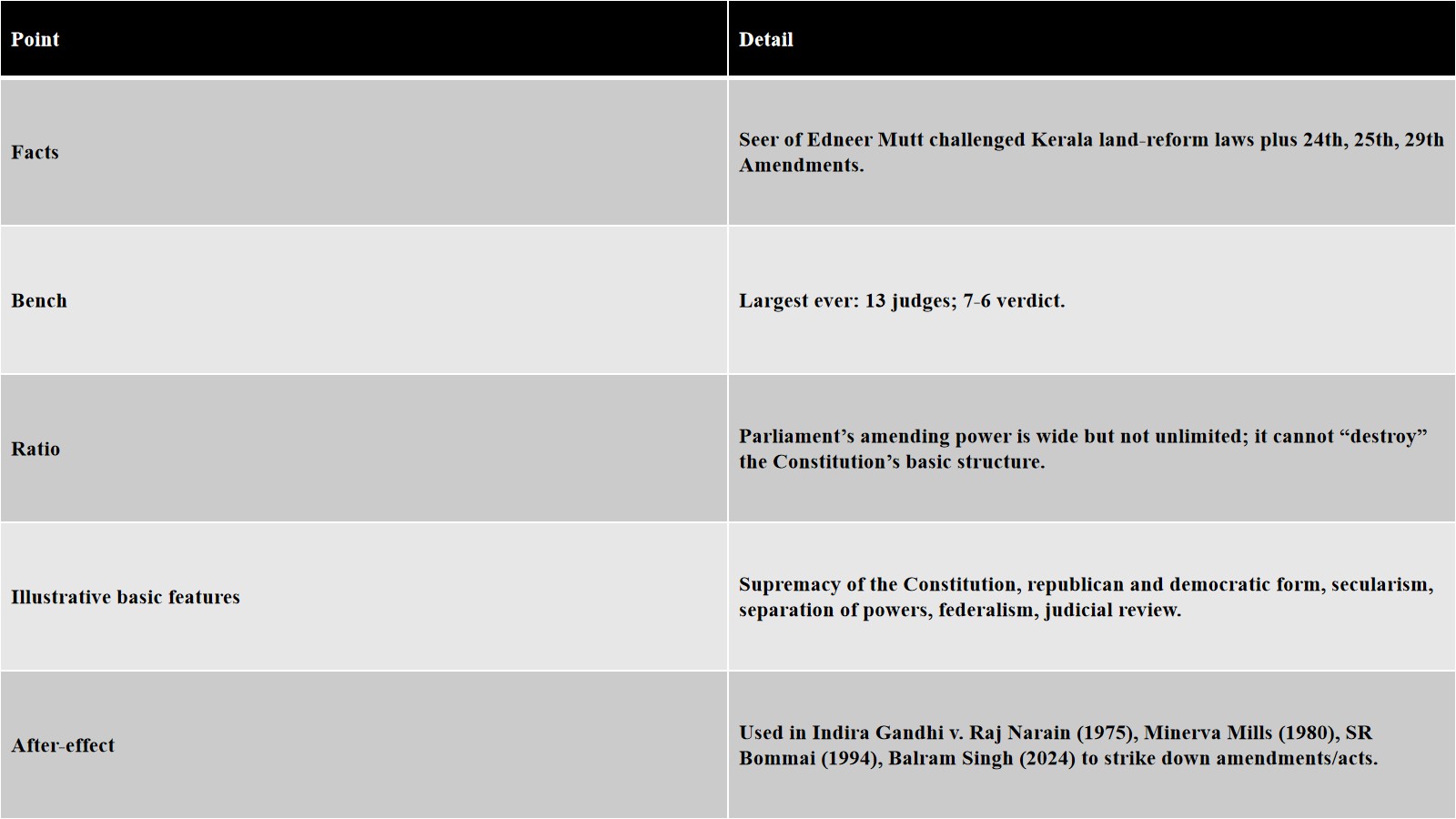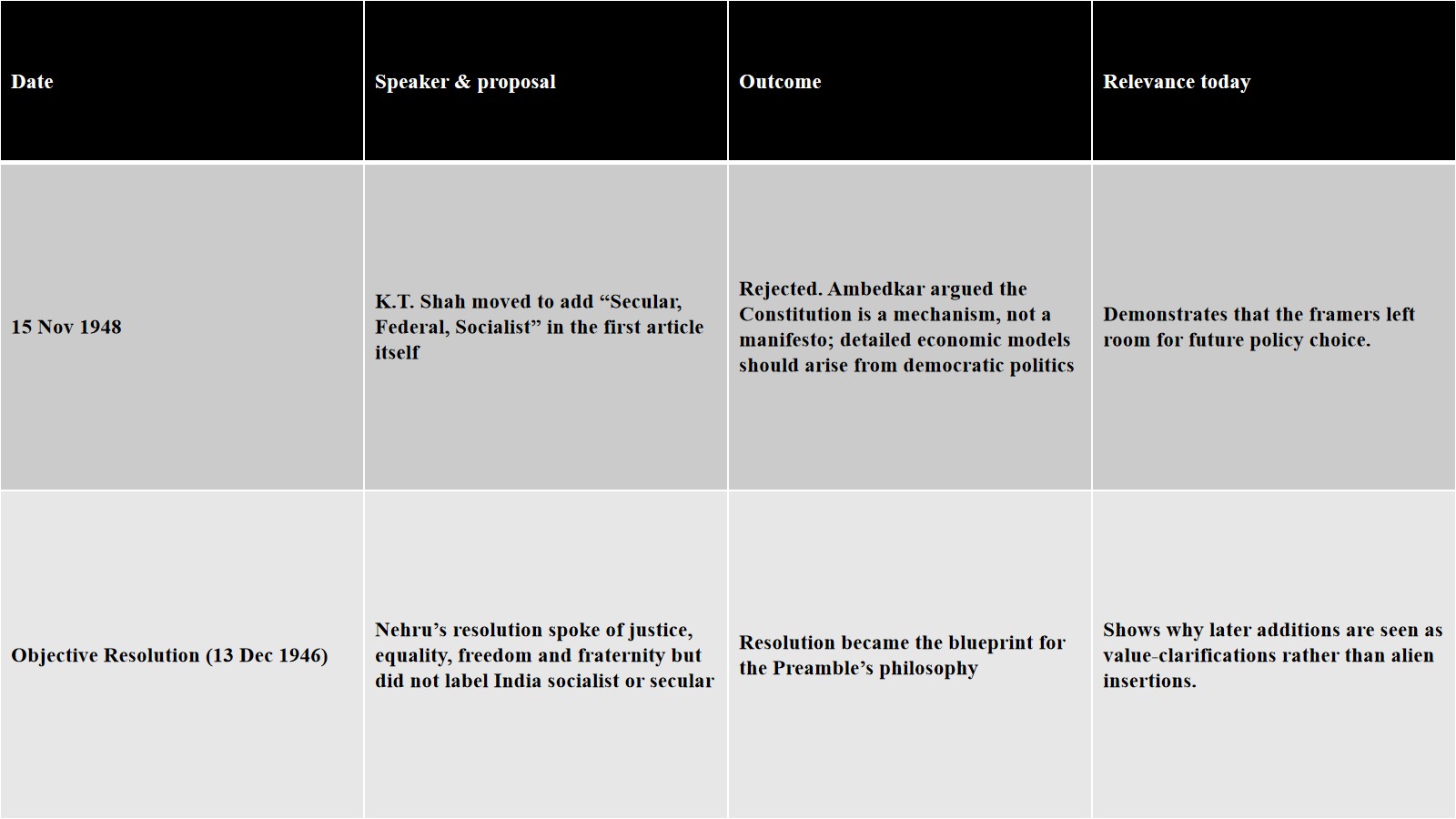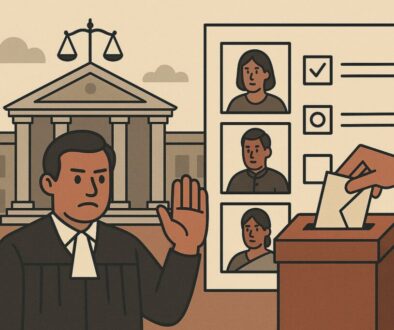Debate on removing “socialist” & “secular” from the Preamble.
Table of Content:
India’s Preamble fight has resurfaced because senior RSS leader Dattatreya Hosabale publicly called the Emergency-era words “socialist” and “secular” political add-ons that should now be dropped. The suggestion has triggered an instant push-back from Opposition parties and several State governments, while jurists point out that the Supreme Court has twice refused to entertain such pleas, ruling that the two words form part of the Constitution’s basic structure, and therefore lie beyond Parliament’s amending power. In the explainer that follows you’ll first see how this live controversy has unfolded, and then—step by step—the five static pillars UPSC setters routinely mine for questions: (1) philosophy of the Preamble, (2) the 42nd & 44th Amendments, (3) the Basic-Structure doctrine, (4) the scope of Article 368, and (5) the original Constituent-Assembly debates on these very terms.
The fresh debate: keeping or dropping “Socialist” & “Secular”
Why it flared up now
-
On 27 June 2025 Hosabale argued that the terms “came from the Congress during Emergency and do not reflect India’s civilisational ethos”.
-
Within hours, leaders from Congress, RJD and the Left branded the move an assault on constitutional values.
-
The plea is not new—private petitions filed in 2024 were summarily dismissed by the Supreme Court, which relied on earlier precedents to uphold the 1976 wording.
Key legal obstacles to deletion
-
Basic-Structure shield Secularism was declared a basic feature in S.R. Bommai (1994); socialism was accepted as embedded in Directive Principles in Minerva Mills (1980).
-
Article 368 limitations Any amendment that “destroys” a basic feature is unconstitutional (Kesavananda, 1973). Deleting the words would almost certainly be struck down.
-
Political numbers A formal Bill needs a two-thirds majority in both Houses and ratification by half the States—currently improbable.
Preamble: philosophy & objectives
The 42nd & 44th Constitutional Amendment Acts
42nd CAA, 1976 – “Mini-Constitution”
-
Added “Socialist”, “Secular” & “Integrity” to the Preamble.
-
Curtailed judicial review, enlarged Centre’s powers, and inserted Fundamental Duties.
-
Passed during Emergency when civil liberties were suspended, making it India’s most controversial amendment.
44th CAA, 1978 – Democratic rollback
-
Restored judicial review and fundamental rights curtailed by the 42nd Act.
-
Tightened Emergency provisions—e.g., property right became a legal, not fundamental, right.
-
Re-established balance between Part III (Rights) and Part IV (Directive Principles).
Basic-Structure doctrine (Kesavananda Bharati, 1973)
Amending power vs constituent power (Article 368)
Text & procedure
-
Bill may originate in either House; must pass with a “special majority” (≥ 2/3 of members present and ≥ 50 % of total strength).
-
Amendments affecting federal features also need ratification by ≥ ½ of State Legislatures.
Judicial interpretation
-
1951 – Shankari Prasad: Article 368 gives full amending power; Fundamental Rights can be amended.
-
1967 – Golak Nath: Majority held Art. 368 is only a procedure; amending power equals ordinary law-making, thus bound by Art. 13(2).
-
1973 – Kesavananda: Clarified Parliament exercises constituent power under Art. 368, but that power is limited by basic structure.
-
Post-Kesavananda: 42nd CAA tried to overrule; 44th CAA & later cases reaffirmed limits.
Constituent-Assembly debates on “Socialist” & “Secular”
How to integrate this in your prep
-
Link dynamic to static – Every time you read a news item on secularism, recall S.R. Bommai and basic-structure limits.
-
Memory hooks – “42 adds; 44 shaves” is a handy mnemonic.
-
Answer-writing tip – When citing Article 368, always mention the phrase “constituent power subject to basic structure” to score brownie points.






